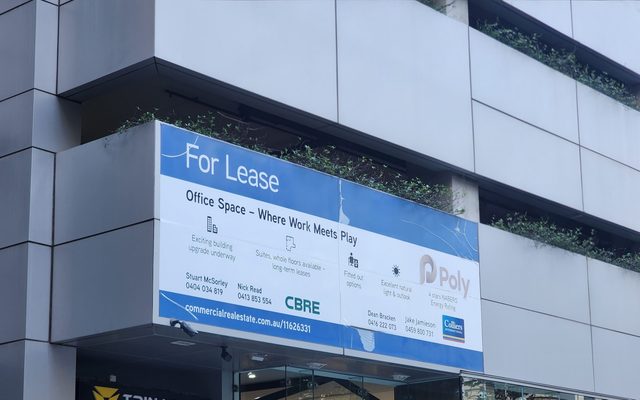This article is from the Australian Property Journal archive
THE Melbourne retail property market is no longer playing second fiddle to Sydney, CBRE research found retailers are paying higher rents for Super Prime and Prime space Melbourne.
CBRE executive director of global research and consulting Kevin Stanley said the “indicative” level of what retailers would pay in Melbourne is ahead of Sydney in both the Super Prime market, that being Bourke St Mall in Melbourne and Pitt St Mall in Sydney, and the Prime market.
In Sydney, the indicative rental for Super Prime space (in and immediately around the Pitt St Mall), dropped 6.2% in Q4 2011 — the first drop in 10 years and led to the CBD’s indicative rental being quoted at $7,560 per sqm pa net, a level which remained stable in Q1 2012 — below Melbourne’s indicative rental of $7,700 per sqm pa net.
“Indicative retail rentals have broadly held up so far in this cycle, especially in CBD areas where redevelopment work and new retailer openings have helped drive shoppers back downtown and stimulated spending.
“However, the reality is that consumer confidence and spending remains low overall and the property indicators have started to show some signs of weakness. This has been particularly evident in Sydney and it has led to a changing in the guard in relation to which cities can command the highest Super Prime indicative rents,” Stanley said.
However Stanley when it comes to the highest achievable rents, Sydney continues to outstrip Melbourne with $11,560 per sqm pa net, which is 33% above Melbourne.
“However, if you looked at indicative rents there has clearly been a changing of the guard, underpinned by lower vacancy and the current offshore retailer interest in the Melbourne market,”
Meanwhile Stanley said a more pronounced change has emerged in the Prime retail market – which was the next lowest tier in the CBD retail spectrum, below Super Prime. Prime typically represents the areas around the pedestrian malls such as Pitt St Mall and Bourke St Mall.
In these locations, indicative rents in Melbourne are 18% above those of Sydney — $3,056 per sqm pa net versus $2,496 per sqm pa net.
“Similar to the change in Super Prime rents, it’s the 16% fall in Sydney’s Prime rents over the last couple of years which has helped put Melbourne ahead.
“The vacancy rate in both cities helps explain the situation. While the total retail vacancy rate in both Sydney and Melbourne remains low, they have crept higher over the past few years, with Sydney’s latest count showing a total rate of 3.10%, up from 0.60% in late 2009,” he continued.
Stanley said the 3.10% rate in Sydney was, in fact, the 10 year average, but the increase from such a low point just a few years ago had clearly caused some stress on rents.
In Melbourne, Stanley said the total vacancy rate was lower at 2.5%, but it was now high enough to stop rents growing.
“This is exactly what has happened in the Sydney Super Prime category. And it’s quite possible, Sydney is just a little ahead of Melbourne in this trend and the next phase for Melbourne, especially given the tough employment conditions there at present, will also lead to an easing in rents there too,” he concluded.
Property Review



